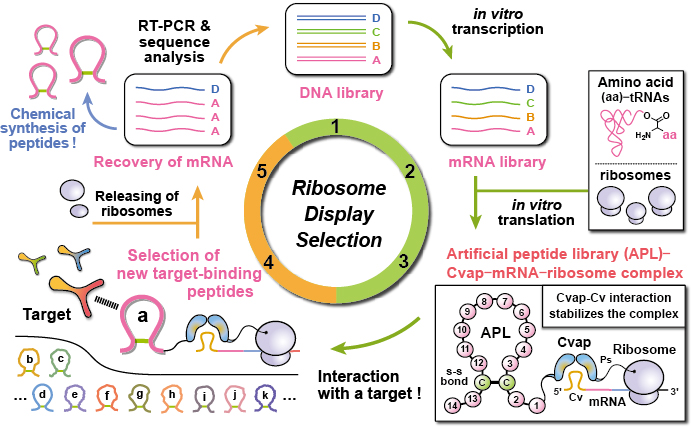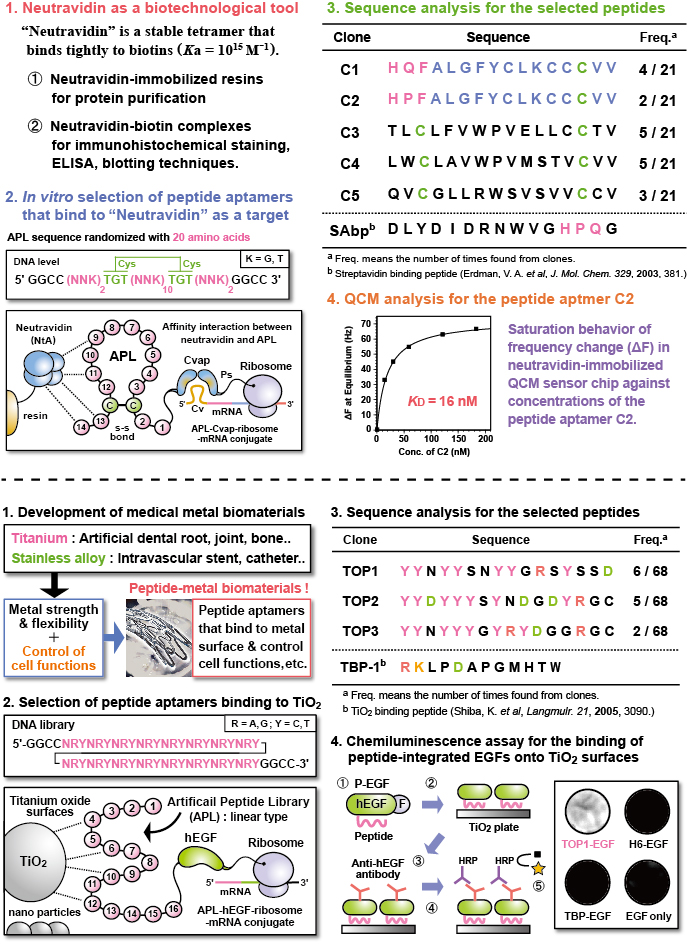Sep. 1, 2013
New development of biofunctional molecule screening technologies for life science and drug discovery
RIKEN No.: 07754, 07917
Inventors
Akira Wada, Hiroyuki Osada (Chemical Library Validation Team)
Background
Our bio-display technology using artificial protein expression system has been devised for in vitro screening of biofunctional molecules. The technology enables us to select target-binding peptides form an artificial peptide library with over 1011 varieties. The selected peptides are expected to bind strongly to various targets (e.g. disease-related proteins and biomaterial surfaces) and control their specific biofunctions. Furthermore, the technology in conjunction with human protein library makes it possible to identify target proteins against various bioactive compounds, which will be applicable to the design and development of drugs with few side effects.

Fig.1: Biofunctional molecule screening technologies
Summary
The originally-developed ribosome display technology has several advantages compared to conventional bio-display technologies. For example, we can use various libraries of artificial peptides or natural proteins derived from any species, and freely set their length, steric structures and amino acid usage.
Furthermore, since these libraries can be synthesized in a test tube within only 15 minutes, it is possible to create functional peptides and identify target proteins of bioactive compounds at low cost and in a small space. Notably, we have already succeeded in establishing flexible protocols suitable for in vitro biomolecule selections against various targets.
Therefore, this technology is applicable to the development of automatic devices for high-throughput screening of tailor-made biomolecules, and their use will be expanded to pharmaceutical companies, medical facilities, research institutions, and universities around the world.

Fig.2: In vitro selection and characterization of target-binding peptides suitable for various applications
Applications
- Creation of target-binding peptides as alternatives to antibodies
- Identification of target proteins of new bioactive compounds or drug seeds
- Development of peptide-based tools for analysis of protein structure and cell functions, bioprobes for diagnosis of disease, and tailor-made inhibitors
- Fabrication of cell function-regulated biomaterials for medical therapies, and bio- nanostructured arrays for target molecule detection
References
- 1.Japanese patent No.5863045, US patent 8697655, PCT/JP2011/055815
- 2.Japanese patent No.6057297, US patent 9863936, PCT/JP2012/063221
